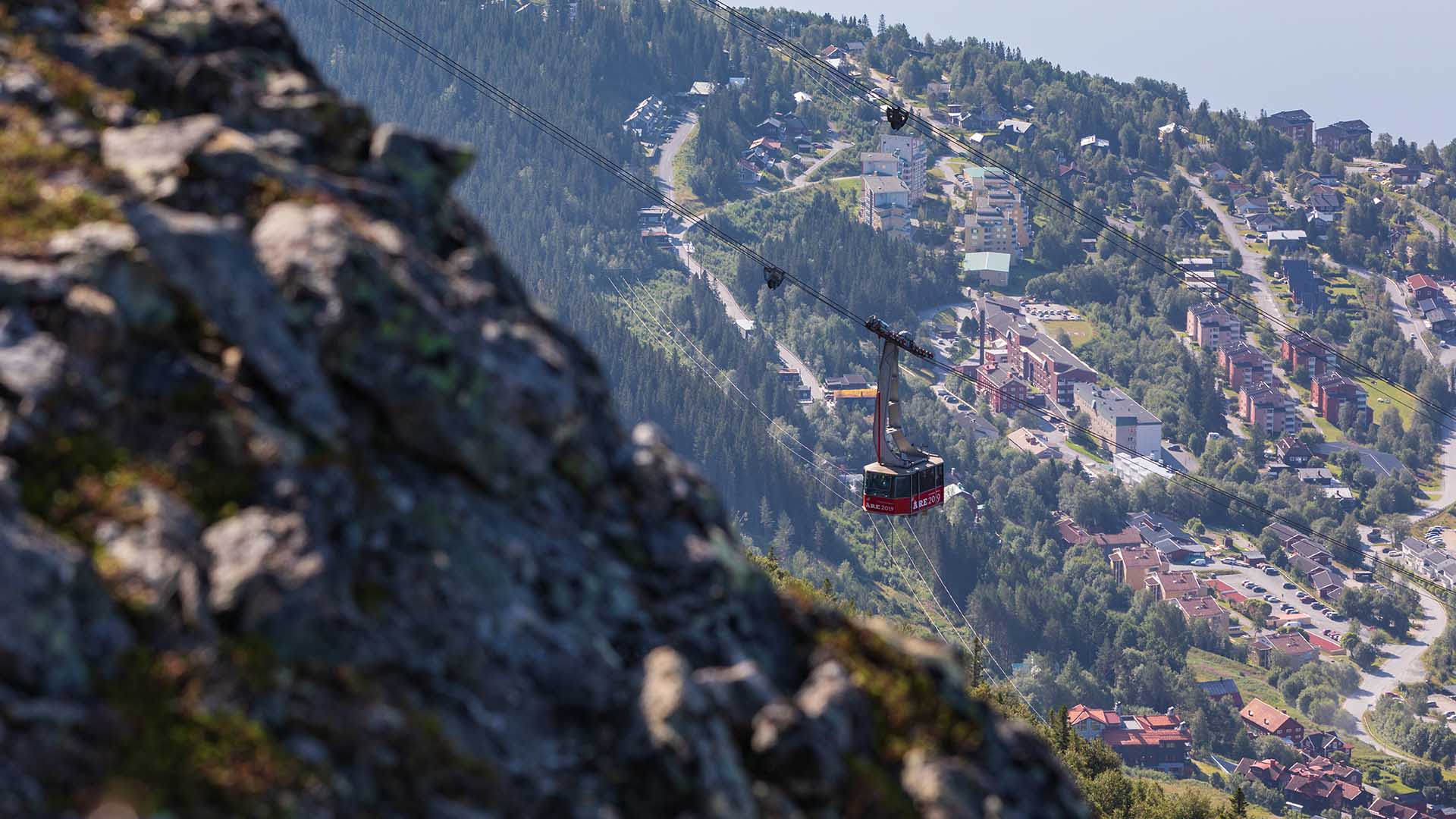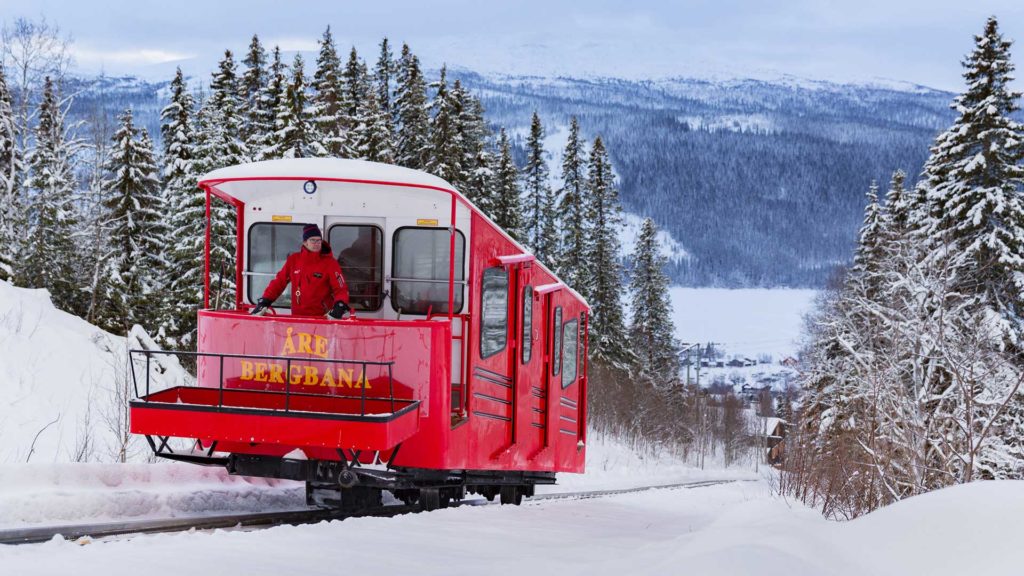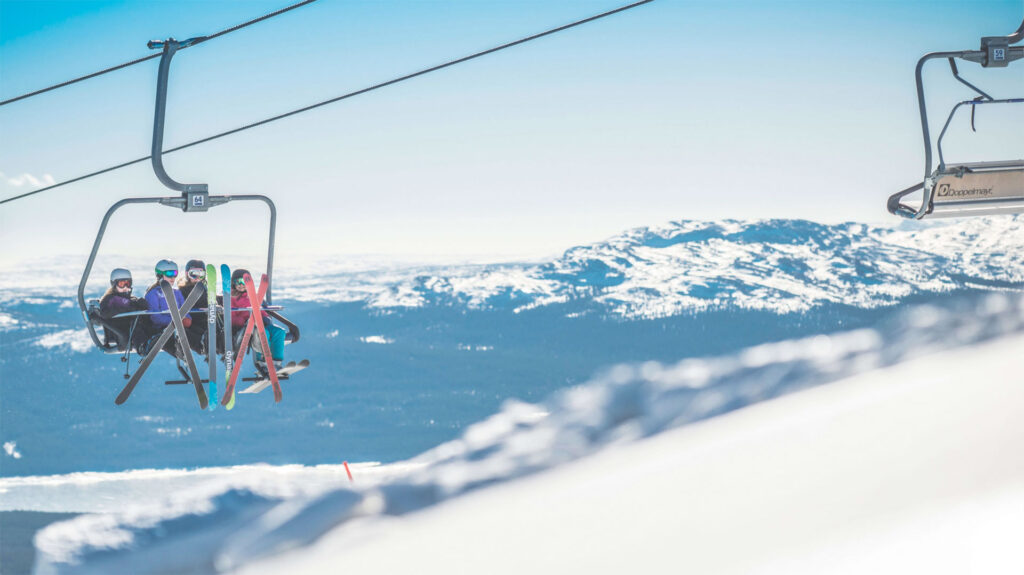Åre Kabinbana - The Cable Car
Åre Kabinbana is a land mark in Åre. Since the premiere in 1976 it has made countless tours up and down Mt. Åreskutan, carrying skiers, bikers and hikers, making Åreskutan easy to access for anyone who wants to experience Åre and its surroundings from 1420 metres.
Good to Know
WALKING Starting from Åre Square you take the stone stairs via Max Hamburger Restaurant, pass Åre Skidsport and continue along the small arcade until you reach the end of the building. Turn right and walk underneath the bridge (the E14) and you’ll see the valley station in front of you. It’s also possible to walk via Årevägen and follow Kabinbanevägen all the way.
BY CAR Access the parking area via the E14 or Kabinbanevägen. Parking is available on two levels to the west of the valley station.
Access
Enter the rather brutalist valley station at Kabinbanevägen 17 via the stairs or the elevator and head towards the ticket office (The SkiStar Shop) in front of you (take a left from the elevator). If you don’t have a Ski or Bike Pass, single tickets are available in the SkiStar Shop or via the SkiStar app. Dogs are allowed but remember to always keep them on a lead whenever you’re on the mountain.
Opening Hours
About the Cable Car
The valley station is located at 421 metres above sea level and today it houses workshops, offices and a SkiStar Shop as well as a heated shelter. One car has the capacity of transporting 75 people, when the weather conditions are optimal. As a rule, it departs every 20 minutes and after entering the cable car, you’ll have seven minutes of breathtaking views of Åre and its surroundings. When exiting after rising 860 vertical metres, you’re at 1274 metres above sea level and to reach the peak of Mt. Åreskutan, you need to walk a bit further, to 1420 metres for an uninterrupted 360 degree view of the surrounding mountains.
History & Curiosities
The cable car, known as Åre Kabinbana, was built as part of the 1972 Åre Project and premiered in 1976. The Åre Project was an initiative from the Swedish Government to make Åre an established and accessible ski area for all.
The building of the Åre Kabinbana cable car began in February 1975 after the construction of a smaller transportation line that would bring the workers and building material up to the mountain station. The lift posts were in place in June the same year and the wire followed in the winter of 1976. However, that winter was one of the worst in Åre’s history and the workers from Switzerland were snowed in on several occasions for a few days at a time, confined to their working barracks on the mountain top before they could continue. Around Easter, just before the inspection, one of the wires came loose and fell to the ground and a new one had to be ordered. Fortunately, no one was injured but the deployment scheduled for Easter had to be postponed and the cable was finally ready in the autumn of 1976.
A Few Facts & Numbers
The two cable cars run simultaneously in opposite directions so as one goes up, the other comes down. The cable cars are attached to two wire cables that measure 3190 metres and each weighing 43 tons. They are pulled electrically by means of a circular dragline. Four anchored pillars hold the cables over a stretch of 2900 metres. The lift posts measure 40-60 metres and are attached to concrete foundations that are anchored in the mountain. The supports are designed to withstand defrosting and winds up to 70 m/s.
Food & Beverages
The mountain station houses the Basecamp Café which has the same opening hours as the cable car. At peak season, Toppstugan, located on the very peak of Mt. Åreskutan, is also available for light food options (try their Swedish waffles). In summer, you can hike the last bit from the mountain station to the top and in winter, there’s a snowmobile available for towing.

Other Things to See & Do
Last updated 7 July 2025


